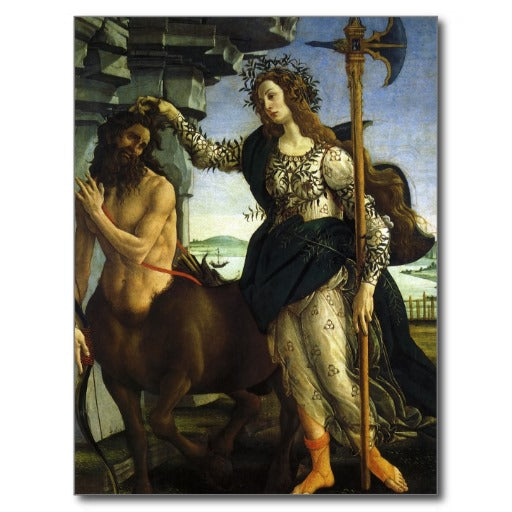The origins of mythical beasts

Pallas and the Centaur, Sandro Botticelli c 1482
The curious human psyche has always had an innate desire to categorise and understand our natural world. Today, with the sound information we have accumulated, we are as pragmatic as possible, using science as our guide to reason the whys, hows, and whats of the natural universe.
If you take this knowledge away, then the world becomes a very mystical place indeed, with our beasts and creatures becoming more and more extraordinary as we attempt to classify them through our imaginings and superstitions, rather than scientific fact-based reasoning. This was the reality of ancient man as they tried to make sense of a seemingly dangerous, unpredictable, and unforgiving existence: a world where oceans lead to the abyss, where the Sun God galloped across the horizon in a golden chariot, and the forests were teaming with an assortment of monsters and beasties.
In this mini blog series we will be looking at how man has interpreted animals in the past, weaving them in to tales of folklore and myth as they tried to make sense of a cruel but beautiful world: we will learn how previously unknown exotic animals were portrayed in polar culture, and also look at some of the creatures who have eluded science, and are still a mystery to this very day.
A prime example of ancient man's possible misinterpretation of the unfamiliar are the Centaurs - as portrayed in Botticelli's painting 'Pallas and the Centaur' (image above). They were mythological beings with the upper-body of a man and the lower-body of a horse, and were said to live in tribes residing in the regions of central Greece and Cyprus - the latter being the horned variety spawning from the seed of Zeus. One theory as to how these beings came in to existence is that they were perceived to be this way by non-riding cultures, observing horsemanship for the very first time. They simply didn't grasp the concept that man could actually ride a horse, and so they took the image of a man upon beast at face value, and merged the two in to one.
The Griffin, with the body of a lion and wings and head of an eagle, was possibly first invented in the minds of ancient man travelling to East Asia via the Silk Road. It is speculated that travellers may have stumbled across the exposed fossils of a beaked dinosaur known as the Protoceratops, and with what little animal knowledge they had, put two-and-two together to assume the existence of a very remarkable 'King of all Creatures'.
With word-of-mouth being the main method for collecting information in the ancient world, it's no surprise that some animal sightings - logical to us now - were completely taken out of context, and woven in to the stories of myth and folklore which attempted to make sense of life - albeit with a fantastical theme. And so, could the image of a loving Greek dog named Cerberus, father to two adorable pups who never left his side, evolve into the 'Hounds of Hades' - the three headed dog which guards the gates to the underworld!?
